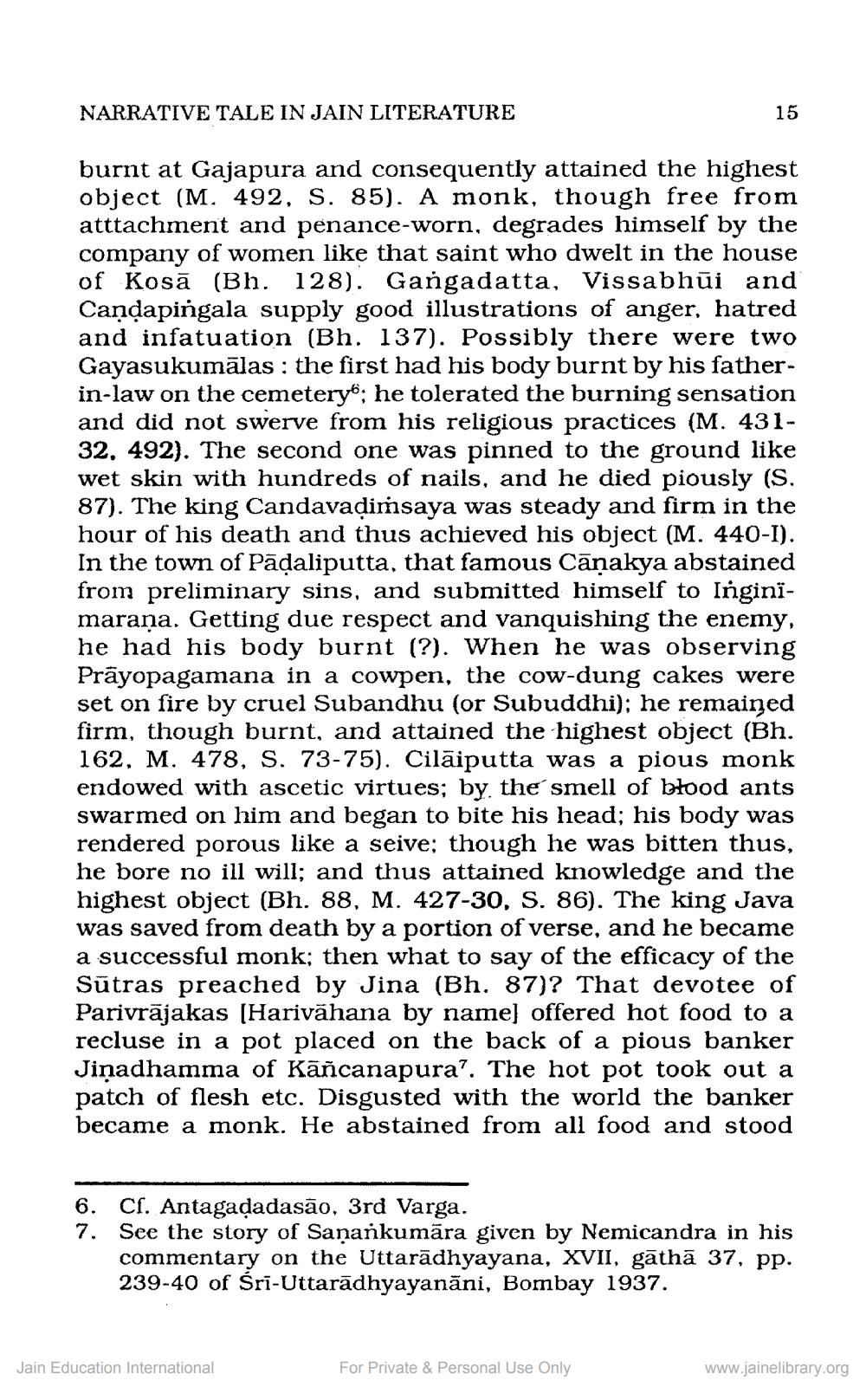________________
NARRATIVE TALE IN JAIN LITERATURE
burnt at Gajapura and consequently attained the highest object (M. 492, S. 85). A monk, though free from atttachment and penance-worn, degrades himself by the company of women like that saint who dwelt in the house of Kosā (Bh. 128). Gangadatta, Vissabhūi and Candapingala supply good illustrations of anger, hatred and infatuation (Bh. 137). Possibly there were two Gayasukumālas : the first had his body burnt by his fatherin-law on the cemeteryo, he tolerated the burning sensation and did not swerve from his religious practices (M. 43132, 492). The second one was pinned to the ground like wet skin with hundreds of nails, and he died piously (S. 87). The king Candavadiņsaya was steady and firm in the hour of his death and thus achieved his object (M. 440-I). In the town of Padaliputta, that famous Cāņakya abstained from preliminary sins, and submitted himself to Inginïmarana. Getting due respect and vanquishing the enemy, he had his body burnt (?). When he was observing Prāyopagamana in a cowpen, the cow-dung cakes were set on fire by cruel Subandhu (or Subuddhi); he remained firm, though burnt, and attained the highest object (Bh. 162, M. 478, S. 73-75). Ciläiputta was a pious monk endowed with ascetic virtues; by the smell of blood ants swarmed on him and began to bite his head; his body was rendered porous like a seive; though he was bitten thus, he bore no ill will; and thus attained knowledge and the highest object (Bh. 88, M. 427-30, S. 86). The king Java was saved from death by a portion of verse, and he became a successful monk; then what to say of the efficacy of the Sūtras preached by Jina (Bh. 87)? That devotee of Parivrājakas (Harivāhana by name) offered hot food to a recluse in a pot placed on the back of a pious banker Jinadhamma of Kāñcanapura?. The hot pot took out a patch of flesh etc. Disgusted with the world the banker became a monk. He abstained from all food and stood
6. Cr. Antagadadasāo, 3rd Varga.
See the story of Sanankumāra given by Nemicandra in his commentary on the Uttarādhyayana, XVII, gāthā 37, pp. 239-40 of Sri-Uttarādhyayanāni, Bombay 1937.
Jain Education International
For Private & Personal Use Only
www.jainelibrary.org




